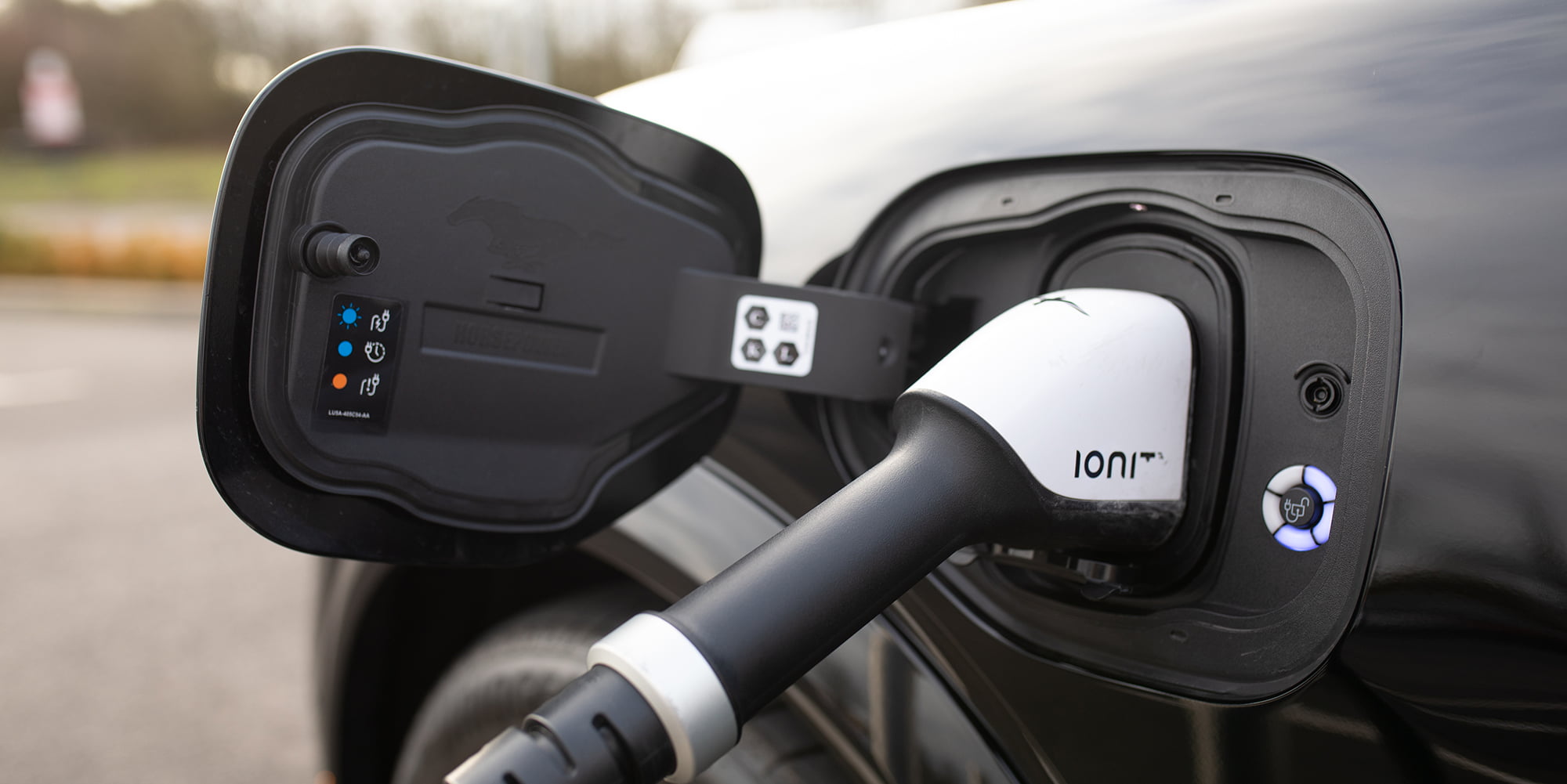
The inevitable switch from Internal Combustion Engine (ICE) vehicles to Electric Vehicles (EV) is still the best part of a decade away, but is slowly drawing closer. If your fleet is one of the many already making the switch, we at IAM RoadSmart want to support you in making your transition as easy as possible. That’s why we offer training courses like EV Familiarisation, specifically designed to help your drivers adapt to the new driving experience, as well as e-learning modules available as an option in our CHOICES online fleet risk management portal.
With that in mind, here’s a first-hand account of how our Head of Driving and Riding Standards, Richard Gladman, found his recent experiences with EVs.
In 2030, whether we are ready or not, legislation will prevent the sale of ICE vehicles. This includes hybrid or plug-in hybrid versions, so my current vehicle, which is a Plug-In Hybrid Electric Vehicle (PHEV), would not be an option. This blog isn’t about whether the PHEV is the best or worst of both worlds, and I can see the arguments either way, but for my current driving needs it does work. I can use no petrol when doing my daily tasks or rely on the ICE for the longer journeys that work sometimes requires.
The purpose of this story is to outline how living with a fully electric vehicle affected my ability to do my job, whether range anxiety is a thing, how I coped with the infrastructure, and the claims made by the car manufacturers. It’s not intended to be a road test of any of the vehicles; far cleverer people than me have extolled the virtues of these latest bits of kit. Having tried three different models, all with approximately the same performance, specification, and range, I would have to say that all three are nice places to be, and their performance is akin to a supercar of only a few years back.
My first journey, after a day of filming in Welwyn Garden City, was home to North Yorkshire – a not inconsiderable 210 miles. My planning for the journey hadn’t been the best, and starting the journey with only 20% battery meant an extended stay at Baldock services only 12 miles into the trip. Plugging the car into a medium-speed charger meant that I would need to wait for at least 50 minutes to get to 80% battery.
Just to discuss the 80% – all the vehicles quote a range for 100% battery but then suggest for longevity that you limit the charge to either 80 or 90%, depending on the manufacturer. Of course, this means my range has effectively been reduced by 20% before I have even started. As I was going to be here for some time, I did make use of the excellent new fish and chip shop in the service area – you’ll see that fast food and coffee become a bit of a theme.
Fast forward to my fully charged car. I would recommend keeping an eye on the cost of electricity, because at 39p per kWh the medium charger is one of the better rates, which cost just short of £20. A fast charger would have taken a few minutes off my wait but at 69p per kWh, it would’ve taken the cost to £32.
At last, I was ready to hit the road. The excellent navigation system listened to me and told me that my destination was out of range on an 80% charge, and asked if I would like to programme in a stop. Wetherby services seemed like a good bet: 35 miles from home and I would have the choice of a short boost to the battery just to get me home, or a more substantial re-charge to leave me some range. I had worked out that, with only a 13amp plug to charge on at home, the battery would take about 48 hours to fully charge. So, I elected to take the pain and go for a longer re-charge. Anyone for coffee and cake?
After half an hour and another 30kWh added to the battery, I had plenty of mileage to get home. The journey as a whole was uneventful – the car is a nice place to be, and apart from my 3 hour and 15 minute journey taking me the best part of 5 hours, it was business as usual.
The next morning my diary was taking me from home in Yorkshire to Dundee and back so, working on what I had learned on my journey home and considering the likely temperatures when I left home at 05:00am, the projected charge of 60% wouldn’t be enough. I elected to take the PHEV and can report that it did the journey with one fuel stop – taking less than 5 minutes.
Saturday saw me planning to travel to Edale and back for a training session. Leaving home with my 80% battery, I was easily going to make my destination. With no charging facility available at my destination and not enough range to make the return, I decided to plan my journey with a boost on the way down allowing me to make a stop at (my soon to be favourite) Wetherby services to ensure I had enough battery for the return journey. The cost for both charges worked out at slightly less than £35, and when I arrived home I had about 50% battery. The forecast of charging showed that my late finish and an early start was not going to allow the battery to get beyond 65%, and this would mean an even lengthier stop for the same route on Sunday. I took the PHEV and did the return journey without stopping.
It’s safe to say it’s baby steps, but at the end of my first week the jury is still out. When the car is moving, it’s great. I quite like fast food, so the opportunity to work my way along the counters is a positive. A 7kWh home charger may have made a difference; 13 hours to a full charge is a lot different to just short of 50 hours.
To be continued…
Richard’s mixed experience doesn’t mean that your fleet can’t thrive with EVs, and IAM RoadSmart want to help make the transition as stress-free as it can be for your fleet. Contact us to find out how we can help you protect your people, your assets, and your organisation.


